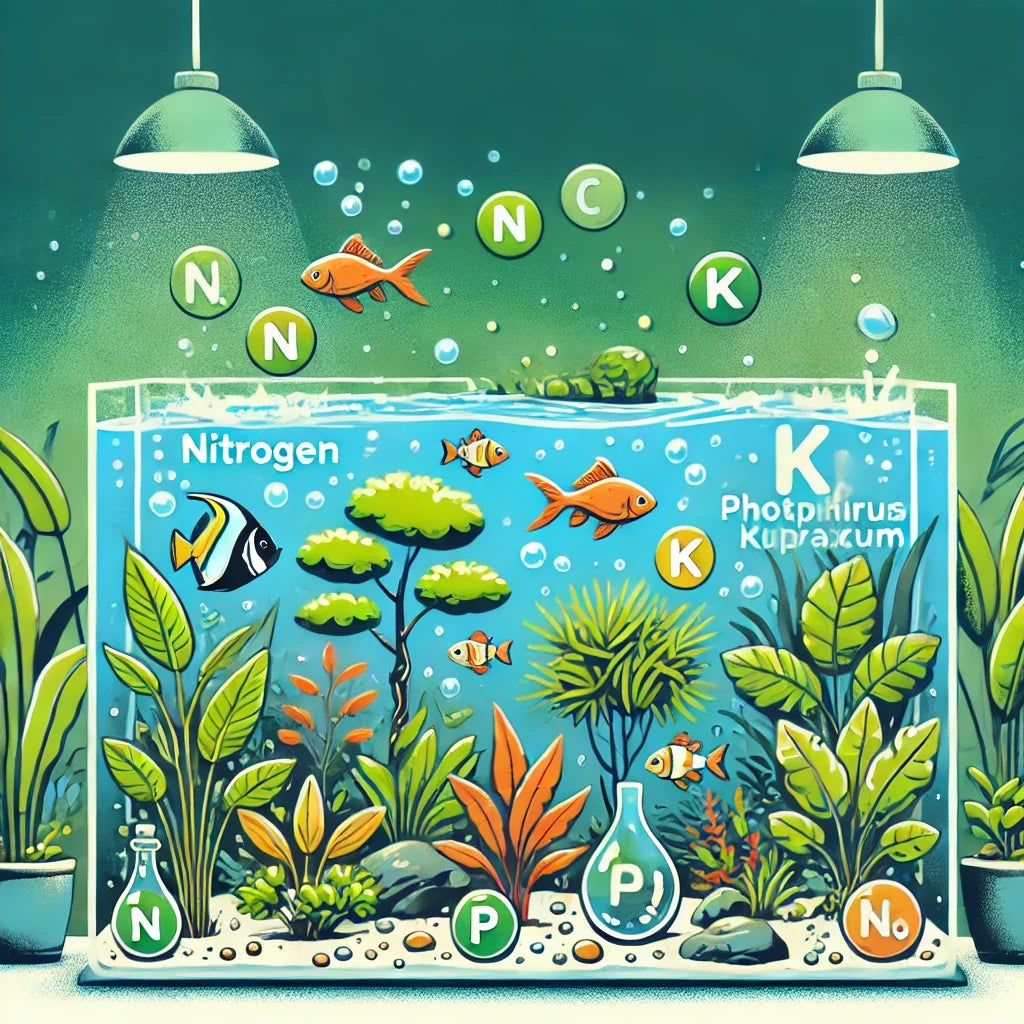Trending searches
Popular collections
Cart
$0

Fertilizing your planted aquarium is crucial for healthy, vibrant plants. Just like land plants, aquatic plants rely on essential nutrients to grow, maintain color, and thrive in your aquarium ecosystem. But with so many options, how do you choose the best fertilizer? This guide will help you understand the different types of fertilizers and how to select the right one for your aquarium.
Aquatic plants, just like those on land, need a mix of macronutrients (Nitrogen, Phosphorus, Potassium) and micronutrients (Iron, Manganese, Zinc, etc.) to thrive. Without these essential nutrients, plants may exhibit symptoms of deficiency, such as yellowing leaves, slow growth, or even melting away. Adding the right fertilizers ensures your plants receive all the nutrients they need to grow strong, remain colorful, and support your aquarium’s ecosystem.
When selecting fertilizers, there are three primary categories to consider:
Liquid fertilizers are dosed directly into the water column and absorbed by plants through their leaves. These are ideal for tanks with plants that absorb nutrients through their leaves, such as stem plants, floating plants, and epiphytes like Anubias and Java Ferns.
Root tabs are solid fertilizers that are placed in the substrate and slowly release nutrients over time. They are excellent for plants with strong root systems, such as Cryptocorynes, Sword plants, and Vallisneria. These plants take up most of their nutrients through their roots, so root tabs provide a direct source of nutrients.
All-in-one fertilizers combine macro and micronutrients into a single solution, making them convenient for aquarists who want a balanced approach without the need for separate products. These fertilizers are ideal for tanks with a variety of plants that require nutrients from both the substrate and water column.
To choose the best fertilizer, it’s important to understand the role of macronutrients and micronutrients:
Choosing the right fertilizer depends on the type of plants in your aquarium and their growth habits. Here’s how to select the best fertilizer based on your setup:
If your tank is filled with root feeders such as Cryptocorynes, Amazon swords, or Vallisneria, root tabs or substrate fertilizers are essential. These plants take in most of their nutrients through their roots, so placing root tabs in the substrate will provide a steady source of nutrients.
Plants like Cabomba, Rotala, and Water Sprite absorb most of their nutrients from the water column, so using liquid fertilizers will be most effective. Ensure you dose regularly to maintain proper nutrient levels.
If you have a combination of rooted plants and stem plants, an all-in-one fertilizer is the best solution. These products ensure that both types of plants get the nutrients they need, whether from the substrate or the water column.
Monitor Nutrient Levels: Use test kits to check for nutrient imbalances, especially nitrate (NO3) and phosphate (PO4) levels. This helps you adjust your fertilizer dosing accordingly.
Watch for Deficiency Symptoms: Yellowing leaves, holes in leaves, slow growth, and leaf melting are signs that your plants may be lacking nutrients. Adjust your fertilization routine if you spot these symptoms.
CO2 and Lighting: Fertilizers alone aren’t enough to drive growth. If you have high light and CO2 injection, you’ll need to dose fertilizers more frequently to support the accelerated growth. Low-tech setups, with lower light and no CO2, require less frequent dosing.
Start Slowly: If you’re new to fertilizing, start with half the recommended dose and gradually increase it as your plants show positive growth. This reduces the risk of nutrient overload, which can lead to algae problems.
One common concern is the risk of algae growth due to excess nutrients. While algae thrive in nutrient-rich water, it's often the imbalance between light, CO2, and nutrients that encourages algae growth. Here are some tips to avoid algae while fertilizing:
Fertilizing your planted aquarium is key to creating a thriving, healthy underwater garden. By choosing the right fertilizers—whether they’re liquid, root tabs, or all-in-one formulas—you’ll ensure that your plants receive the essential nutrients they need. Pay close attention to your plant species, water parameters, and overall tank setup to choose the best fertilizers for your needs.
With proper fertilization, your aquarium plants will flourish, adding natural beauty and a sense of balance to your aquatic ecosystem. Start fertilizing today, and watch your aquarium come to life with lush, healthy plants.
!